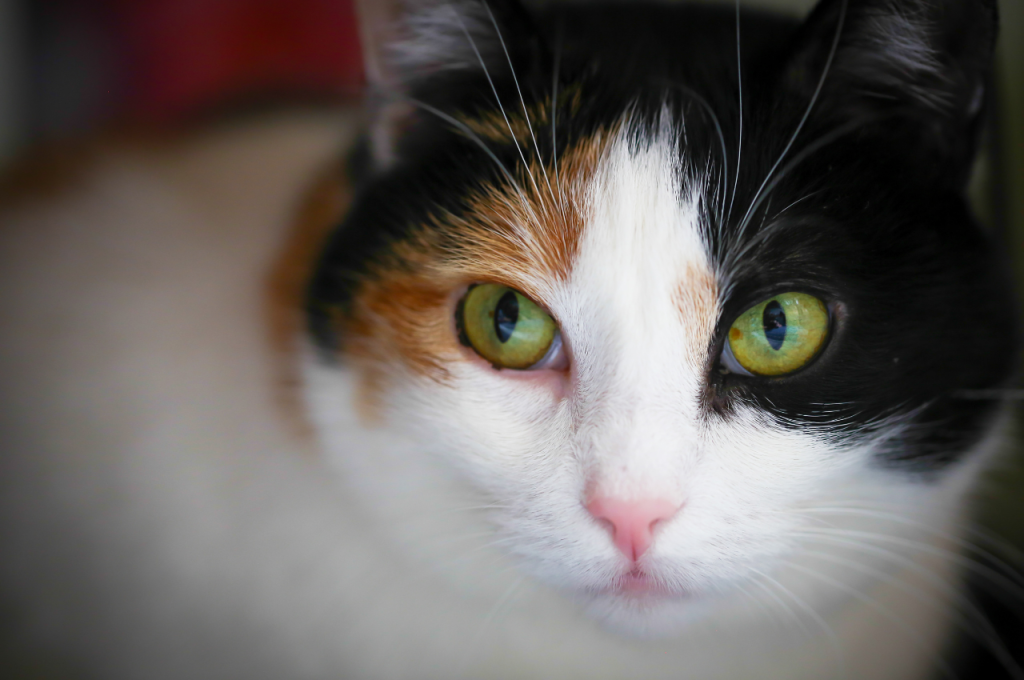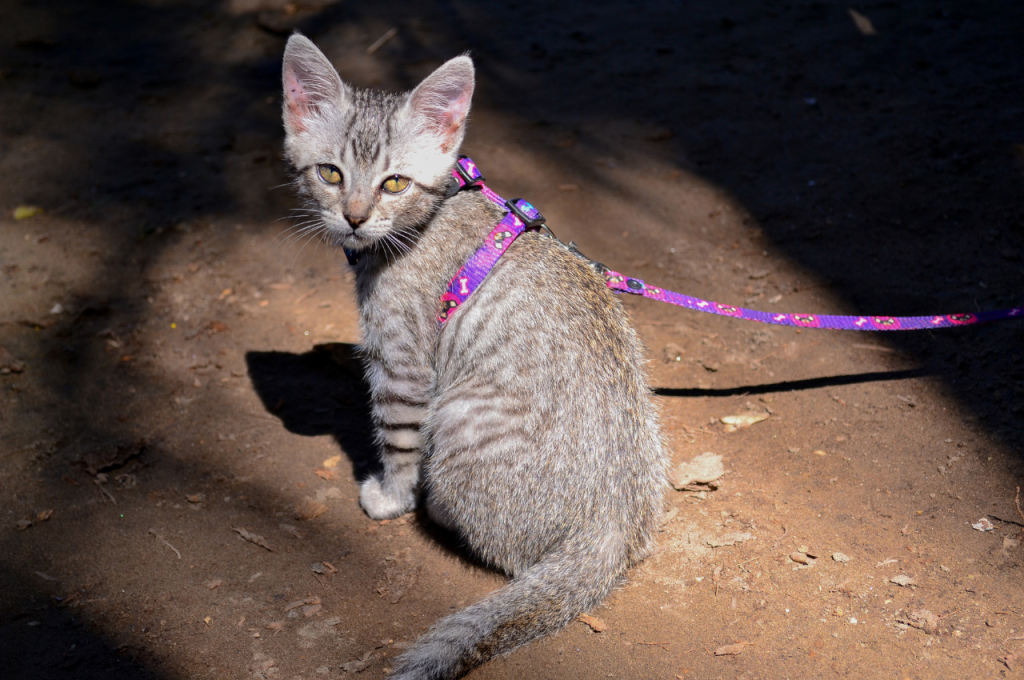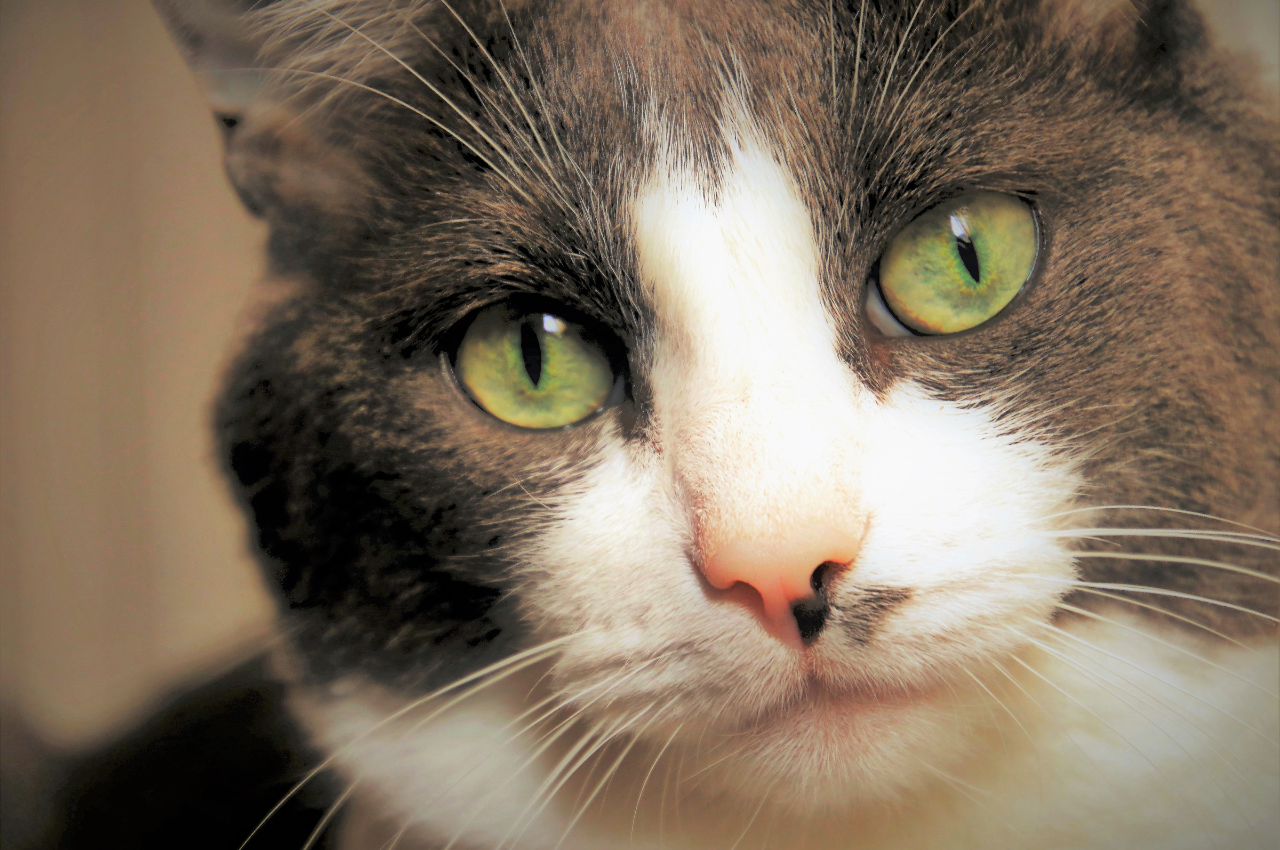Cats see humans as larger feline creatures, forming bonds based on trust and companionship. Their perception includes visual cues and body language.
Cats interpret human emotions and behaviors within their feline understanding, developing relationships built on mutual care and affection. Cats’ vision differs from humans, influencing how they perceive their human companions. Understanding how cats view us sheds light on the dynamics of the human-cat relationship.
By recognizing their unique perspective, we can strengthen the bond between felines and their human counterparts. From interpreting eye contact to responding to vocal tones, cats rely on visual and behavioral cues to interact with humans. This reciprocal communication deepens the connection between cats and their owners, creating a harmonious and fulfilling companionship.
The Visual Perception of Cats
The visual perception of cats is a fascinating aspect of their sensory capabilities, offering insights into how they perceive the world around them. Cats have evolved specialized visual adaptations that enable them to excel as crepuscular hunters, with a focus on detecting movement in low-light conditions. Their unique visual system influences how they interact with their environment, including other animals and humans.

Visual Capabilities
Cats have impressive visual capabilities compared to humans.
- See well in low light due to a reflective layer behind their retinas.
- Can detect motion exceptionally and have a wider field of view.
Differences from Humans
Cats perceive the world quite differently from humans.
- They rely less on color and more on motion and brightness.
- Have a greater ability to see in the dark than humans.
- Notice even slight movements due to their evolved predatory nature.
Cat’s Perspective on Humans
Cats are fascinating creatures that have a unique perspective on humans. They see us differently than we see ourselves, which can be both intriguing and enlightening. Understanding how cats perceive humans can help us deepen our bond with these mysterious and independent creatures. Let’s explore their perspective in more detail, focusing on two key aspects: Recognition of Humans and Emotional Bonding.
Recognition of Humans
Cats have a remarkable ability to recognize and remember humans. They can distinguish us from other animals based on various sensory cues such as our appearance, scent, and even the sound of our voice. It’s astonishing how a cat can differentiate between familiar family members and strangers, often displaying a distinct behavior when certain individuals are around. This recognition is not just limited to visual cues but also extends to our scent and the way we interact with them.
When it comes to visual recognition, cats rely on their acute eyesight to pick up on familiar faces. Their eyes, with a remarkable night vision capability, can capture even the subtlest of facial features. A distinctive pattern or shape can trigger recognition in a cat, allowing them to identify the person in front of them.
Another significant aspect of recognition is the scent. Cats have an extraordinary sense of smell, which they use to distinguish individual human scents. They can easily recognize the scents of their owners and family members, associating them with comfort, safety, and affection.
Emotional Bonding
Contrary to their reputation for independence, cats form deep emotional bonds with their humans. While their affection might not be as overt as that of a dog, their unique way of expressing emotions allows for a profound connection. Cats are known to choose specific individuals as their favorite, often showing them more attention and seeking their company. One way cats show their emotional bond is through purring. The sound of a cat’s gentle purr indicates contentment, comfort, and trust. When a cat purrs in your presence, it is a clear sign that they feel safe and emotionally connected to you.
In addition to purring, cats may also display physical signs of affection, such as rubbing their bodies against your legs or headbutting you lightly. These behaviors are not only expressions of love but also a way for cats to mark their territory and create a sense of belonging.
It’s crucial to understand that not all cats show affection in the same way. Each cat has its unique personality and preferences, so it’s essential to pay attention to their cues. Building a strong emotional bond requires patience, understanding, and respect for a cat’s boundaries.
Body Language Interpretations
Understanding how cats interpret human body language can provide valuable insights into their perception of us. Their ability to interpret non-verbal cues plays a significant role in their interactions with humans. Here’s a closer look at how cats perceive human body language through gaze and eye contact as well as tail movements.

Gaze and Eye Contact
Cats predominantly interpret eye contact as a signal of trust and affection. When a human stares at a cat with soft, blinking eyes, it is perceived as a gesture of kindness and warmth. On the contrary, a stern, unyielding gaze may be interpreted as a threatening gesture, causing a cat to feel uneasy.
Tail Movements
The movement of a cat’s tail can convey various emotions and intentions. An upright and curved tail tip is a sign of contentment or happiness, while a puffed-up tail indicates fear or aggression. Additionally, a swishing tail can suggest a mixture of excitement and agitation.
Communication Signals
Cats communicate with humans using various signals and behaviors. Understanding how cats perceive and interact with humans is essential for strengthening the human-cat bond. Here’s an exploration of communication signals and how cats use vocalizations, purring, and body rubbing to convey their feelings and needs.
Vocalizations
Cats use different types of vocalizations to communicate with humans, such as meowing, yowling, hissing, and purring. Each vocalization serves a specific purpose, conveying emotions, needs, and desires. By paying attention to the nuances of their vocal cues, pet parents can better understand their cat’s mood and respond accordingly.
Purring and Body Rubbing
Purring and body rubbing are common communication signals that cats use to express contentment, affection, and an overall sense of comfort. Purring is often associated with relaxation and happiness, while body rubbing against humans or objects is a way for cats to mark their territory and convey a feeling of ownership and belonging.
Behavioral Observations
When it comes to how cats see humans, behavioral observations provide invaluable insights into their perception. Cats have unique ways of interacting with us, showcasing their playfulness and affection in various ways.
Playful Interactions
Cats often engage in playful interactions with humans, which can be a clear indicator of how they perceive us. They may behave like pouncing, chasing, or even swatting at our hands or feet. These playful gestures demonstrate their trust and comfort around us. It’s important to note that while their playfulness can be entertaining, we must also establish boundaries to ensure their safety and ours.
Signs of Affection
Cats have subtle yet unmistakable ways of showing affection towards humans. Some of these signs include:
- Purring: Purring is often associated with contentment and happiness. When a cat purrs in our presence, they feel comfortable and secure.
- Head Bunting: When a cat rubs their head against us, it marks us with their scent. This behavior is a sign of trust and affection.
- Kneading: Kneading is a behavior in which cats rhythmically push their paws against a surface, often on our laps. This action mimics the behavior kittens display while nursing, and it signifies their comfort and bonding with us.
- Slow Blinking: Cats communicate through eye contact, and a slow blink is considered a sign of trust and relaxation. When a cat gives us a slow blink, it means they feel at ease in our presence.
Understanding these signs of affection allows us to establish a stronger bond with our feline companions. By reciprocating their affection and respecting their boundaries, we can nurture a deeper connection and create a harmonious living environment.
Environmental Factors
Environmental factors play a crucial role in shaping the visual perception of cats. From the lighting conditions to the layout of their surroundings, various environmental elements influence how cats perceive the world around them. Factors such as natural light levels, artificial lighting sources, and the presence of obstacles or hiding spots can impact cats’ visual experiences and behavior.
Impact of Surroundings
Cat’s behavior is influenced by their surroundings, affecting how they perceive humans.
- Cats in calm, quiet environments tend to see humans as companions.
- High-stress environments may cause cats to view humans as threats.
Influence of Routine
Cats are creatures of habit and routines can shape their perception of humans.
- Consistent feeding times create positive associations with humans.
- Disrupted routines can lead to cats being more wary of humans.
Evolutionary Insights
Understanding how cats perceive humans requires delving into their ancestral traits and adaptations for coexistence.
Ancestral Traits
Cats’ visual perception of humans is shaped by their ancestral traits, which include hunting instincts and predatory behavior.
Adaptations for Coexistence
Domestication has led cats to develop adaptations for coexisting with humans, such as recognizing human body language and forming social bonds.
Enhancing Understanding
In the pursuit of finding ways to enhance our understanding of cats and their interactions with humans, it is crucial to consider their unique perspectives and behavior. By studying feline behavior and promoting healthy relationships, we can gain valuable insights into how cats perceive us and how we can foster positive connections with these fascinating creatures.
Studying Feline Behavior
Understanding how cats perceive humans requires a closer examination of their behavioral cues and responses. By observing their body language, vocalizations, and social interactions, we can decipher the subtle ways in which they communicate and express their feelings toward us. Through systematic observation and research, we can uncover the intricacies of feline behavior and gain a deeper understanding of their perspective on human companionship.
Promoting Healthy Relationships
Building a strong bond with our feline companions is essential for nurturing a harmonious relationship. By creating a conducive environment that meets their physical and emotional needs, we can instill a sense of trust and security in our cats. Providing enriching activities, respectful boundaries, and affectionate interactions fosters a positive rapport and reinforces the mutual understanding between humans and cats.

Conclusion
To sum up, understanding how cats see humans offers valuable insights into the unique bond between the two species. By recognizing that cats perceive us differently, we can better cater to their needs and build a stronger connection. Through their exceptional vision and ability to sense our emotions, cats continue to amaze us with their mysterious ways.
So, next time you interact with your feline friends, remember that they see you in a whole different light. Embrace it and cherish the beautiful relationship you share.
